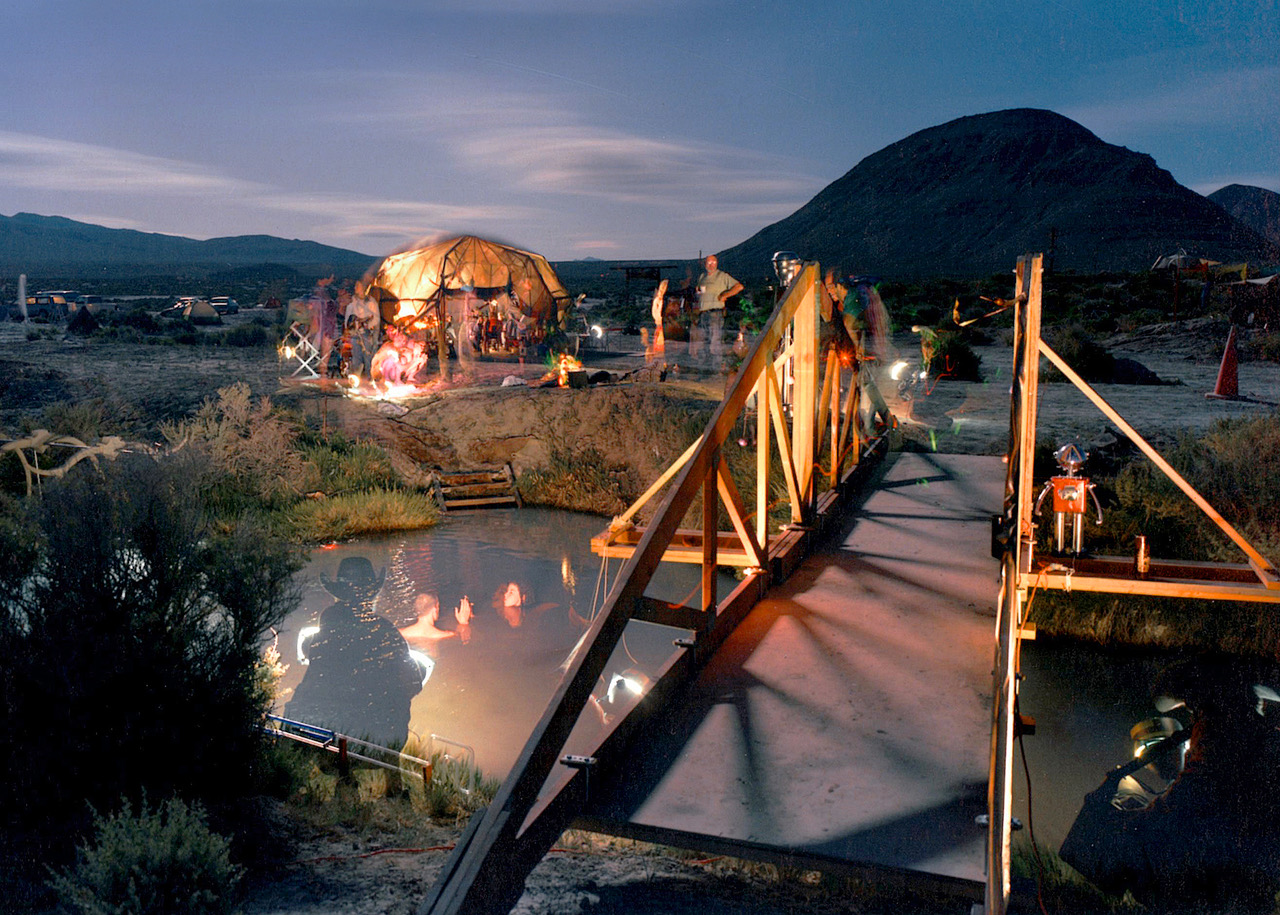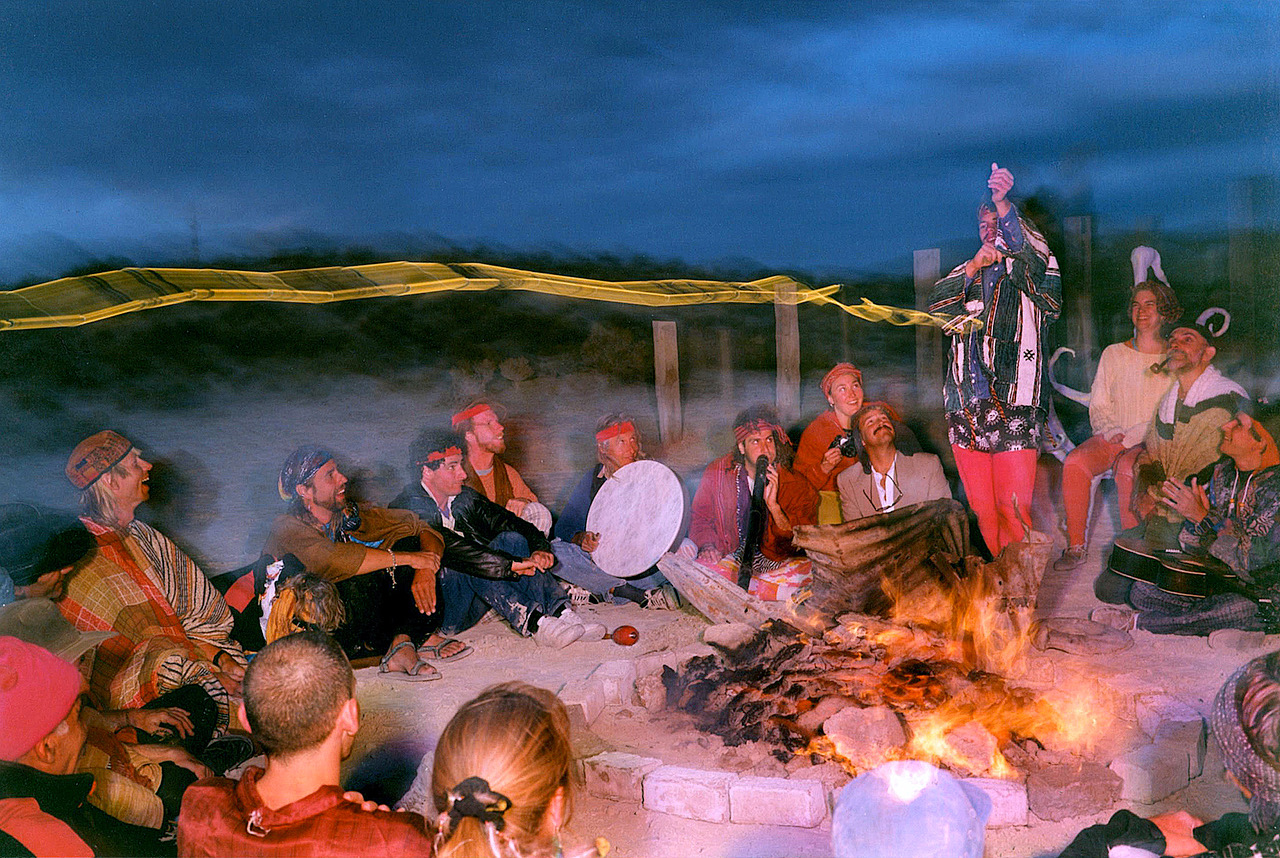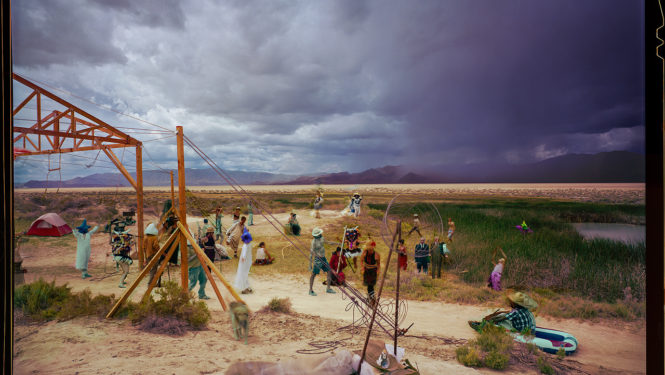This is the sixth installment in a Journal series that explores the ins and outs and random asides of this year’s Burning Man theme, Waking Dreams: past, present and future visions of our hypnagogic reality.
In this episode of the Waking Dreams series we’re going to time-travel back to the earliest days of Burning Man in the desert and reexamine a closely related event that had a formative effect on what we now think of as Burning Man art, the “waking dream” of William Binzen’s Desert Siteworks. Binzen and the Siteworks project have been chronicled before in the Journal, and with good reason. They were an important influence on Burning Man culture, and the human connections made in those early years, bringing artists like Pepe Ozan to the playa, as well as Binzen’s own contributions to Burning Man art, left an indelible stamp on the event.
I’d like to say that this year’s art theme was conceived as an homage to Binzen’s work, but it wouldn’t be true. The theme title occurred to me, appropriately enough, in a dream, rising from the depths of subconscious like Leviathan, dragging dark garlands of sea-kelp and half-formed barnacles of memory. This is my way of saying that at some level, deep in my brain, I probably knew that the title had been used before in a Burning Man-adjacent way, but at the time it simply didn’t register. So when it was brought to my attention that Binzen had used it in 2016 for his gallery show and catalog, documenting the Siteworks events of 1992-1994 and his early Burning Man years, I could only marvel at the wily ways of the multiverse to weave its threads across time and space, and create the appearance of coincidence from the fabric of synchrony. Or vice-versa. And I was persuaded to learn more about these goings-on of thirty-odd years ago, when Burning Man was still an event in search of an identity, and the only art on the playa was a big wooden sculpture of a stylized human.
Today we are able to experience this essential history in a new way, with rarely seen video of the 1993 Siteworks event, compiled by William and his friends, and including commentary from Burning Man co-founder John Law.
The three Siteworks events, each held around a natural spring adjacent to the playa, were intensely collaborative happenings, with everyone participating in the art, performance, and enactment of rituals. As Binzen told me, “We wanted to express ourselves vividly and make a difference. We wanted to heal ourselves. We wanted to transform ourselves. We pulled together. We shared so much with each other, and learned so much about each other, and tried to help each other, because that’s how you survive in an adverse set of circumstances out there. It was very much a group process.”

Even the act of observation was turned into a participatory role when the event organizers decided to create the Office of Witness. “We needed a single witness,” Binzen recalled, “someone who was officially there to hold the space for drama, to keep the bad spirits away and to be that beating heart that absorbed all of this and turned it into food for the rest of us. And that was very important because this was not a theatrical performance for an audience. This was for the purpose of changing and transforming human lives.”
The Allure of the Desert
Growing up in New England, Binzen got his first exposure to the deserts of the American West by watching old cowboy films on black-and-white TV. “Tombstone, Wyatt Earp, Bonanza; shows like that captivated me and I wanted to spend time there. I wanted to see what deserts were about and how to do something with them. I wanted to create sand drawings and make things out in the desert. So that stayed with me, eventually after college and art school. When my wife Nancy and I immigrated to San Francisco, I got involved with the Cacophony Society, and I was fascinated because this was my idea of how life should be: play mixed with work, and the play should be outrageous. We should be inventing ourselves and creating our own culture. And I had ideas for what we could do in the desert. We would respond to the environment, the place, the weather, and learn how to survive and to work together under arduous circumstances in white-outs and glaring sun and figure out where the shared nexus of interest was.”

The Siteworks Legacy
Binzen and his collaborators brought what they learned at the Siteworks events to what would come to be known as Black Rock City. Not just site-specific art like Pepe’s lingams or his own extensive photography, but the predecessor of today’s Center Camp. The first communal structure in BRC was the same building designed and built for Siteworks, a gabled 30-foot square house on four trusses elevated on poles. And John Law recalls that the elaborate costuming at Siteworks events also made an impact: “There was a lot of extreme costuming that people brought along to Burning Man, right out of the Cacophony Society.”
As we all know, time doesn’t play by the rules in dreamland. Past, present, and future are all of a piece. So as time’s arrow arcs us into the future, let’s honor the dreamers who came before us, and hope that those who come after are just as inspired to make their dreams real in the world.
If you’d like to find out when Part 2 of the Desert Siteworks film is completed, as well as the book in progress (also titled “Waking Dream”), email Binzen at william@folioluxe.com, and he’ll put you on the waiting list. You can also see more of his work at williambinzen.com.
Cover image: Rhapsody of the Bohemes, Black Rock Springs—SF Cacophony, 1992 (Photo by William Binzen)


We truly are all walking in our waking dream! Thank you Bill, John, Pepe, Larry, Paradox, Judy, Stuart… this list of desert play friends really is endless…
Report comment
Comments are closed.